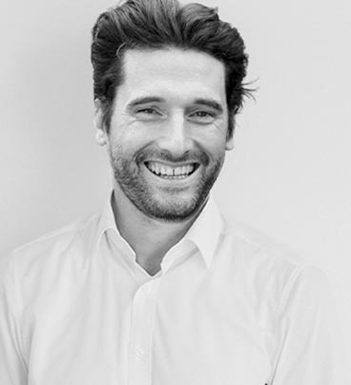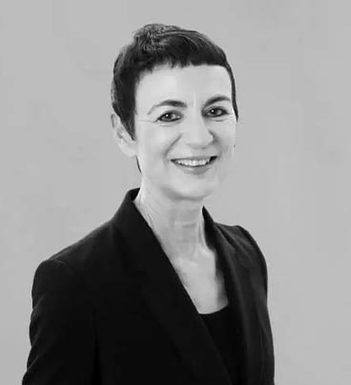
The Big Five Personality Test – Quality doesn’t come for free – Much more accurate than a free personality test
Why do we think about personality tests? We have always asked ourselves questions. This was also the case thousands of years ago.
Who am I?
How am I?
Why is that?
There can be so many answers to this. You can find information on the Internet. But it's up to you to find an answer for yourself. That helps Coaching. A character test wants to show you that he knows what you are like. He asks questions and turns them into a result. This can also be very precise. We have listed the most frequently asked questions here. It is important to understand that a test can help us. He gives us a new perspective. But in the end we are the masters of our lives. And therefore also about what we do. And what answer we give to a color.
It's hard to say which is the best personality test. But we can say that the five-factor test is the most researched. Such job-related aptitude tests are used before an employee is hired. This makes it easier to assess whether someone is suitable for the job. All people are equal. And yet so different. The difficulty lies in forcing individuals into a pattern.
The personality test can be biased. E.g. due to poor sleep or insufficient fitness. And you should answer honestly. Our ideal self is not us. But the answers should come from us. The free tests are usually not scientifically backed. Otherwise the costs vary massively. For private individuals or Companys.

The ability to interact socially is the most common reason why personality tests are used. You want to know whether the new colleague is with the company and Team fits.

It is difficult to say which is the best personality test. The Big Five personality test is the most well-researched test.

Personality tests are regularly used in personnel selection to assess the suitability of candidates.

All people are the same and yet different. The difficulty of a personality test is to squeeze individuals into certain patterns.

External factors such as poor sleep or insufficient fitness can falsify the results of a personality test.

The costs vary massively for private individuals and companies. Unfortunately, in most cases free tests are not scientifically substantiated.
Which personality test is the best?
Personality tests are a dime a dozen. But you should be careful. A lot of it is not scientifically based. Or just very old. Then you can often do little with the result. But if you give it a lot of value, then it can influence you. Because if you believe in it, it will gradually come into reality.
But what is personality? It is the sum of innate and acquired characteristics. One could see it as a union of the self-image and the image of others. Please also visit our page on the topic personality development. A lot goes into the personality profile. Fears, sensations, feelings or needs. Also external, visible behavior. But an online personality test is just an attempt to standardize characters.
Character cannot be pinned down to one point. It is a range from... to... The meaningful Big 5 test is based on this range. That's why he's in Coaching often used.
Our Team is here for you
This is us
The coaching institute consists of one Team the best experts in their field. We have come together to help people where they need us.

HOLGER BROER
The trick to speaking is listening. Make friends, maintain partnerships, win customers. Build companies. Live the life you deserve.
Top 5 products
1. Resilience
2. Change Management
3. Mediation
4. effective communication
5. Leading in uncertain times

DR CARLOS DAVIDOVICH
I didn't just rely on my medical training and deep understanding of the brain. I use neuromanagement coaching to contribute to obvious, lasting change in clients.

LILLY FRITZ
As a judge with many years of leadership experience (president of two district courts), I will support you on your way to more personality.

FRANK GOTTHARDT
We make the best decisions based on our values. Overcoming complex challenges offers me fantastic opportunities to develop and gain experience in many areas.

PROF. DR. HABIL. FRANK KEUPER
The diverse interdependencies between the megatrends and the VUCA world mean that we have to step up a creative and analytical gear when it comes to business.

DR. MIRIAM KLINKE
Mediation and conflict resolution
As an experienced mediator with a legal background, I have always focused on constructive dispute resolution throughout my international career.

PROF. DR. KARSTEN MACHOLZ
Winning people is the key to any successful transformation. With more than 25 years of practical experience, I can support you in developing strategies and successfully implementing them together with your employees.

MANUEL NINE DORFER
I enjoy working with family, friends, employees and clients on topics such as resilience, self-perception, physical and mental health, and general well-being.

TOBIAS RIEGGER
What drives me is to inspire people in such a way that previously unattainable things can be achieved. Be it in sports, as a lecturer at universities and academies or in a professional environment as a management consultant.

CLAUDIA SCHICK
Passionate coach, motivator, networker. I combine over 20 years of TV experience at ARD as a presenter and interviewer with targeted voice and media training.

REGINA KAROLINE SCHULLER
For me, an effective corporate culture, clear communication and value-oriented leadership are key factors for the successful implementation of the mission, goals and strategy of any company.

FREDRICK SPACKE
Every consolidation crisis is an opportunity for companies to intensively examine the value chain for its competitiveness.

DR. BERND STENKAMP
Developing products FOR people together WITH people excites me. More than 25 years of experience developing products.

TIM SHAHRIAR TABRIZI
I love dealing with what moves people. I treat my clients with respect for their individual situation, with a lot of motivation, inspiration and a clear intention to help.

ROLAND G. BROWN
Balancing career demands, families, friends, personal interests and health is a balancing act at the highest level.

RALPH M. RIXNER
As a long-time manager in the IT sector, I have 35 years of experience in setting up and managing international projects.

DR THOMAS MEININGHAUS
Change, quality and transformation processes run through my professional life like a common thread.

KARSTE SCHMIDT
For more than a decade I have been supporting managers of multinational companies in intercultural management and emphasizing the importance of culture in the business world.

Jennifer Baumann
Coaching for women
Every person is different. This means that every consultation is unique. However, women often face similar obstacles. Thanks to my experience, I can help here.
The scientifically based Big Five test – meaningful and beyond personality traits
Allport and Odbert laid the foundation stone as early as 1936. Namely for today's Five Types model. They searched for thousands of terms. The terms that describe human personality. And that from an English dictionary.
Then you challenged psychology. They wanted to know how many categories humans can be described in. They wanted a model. Complexity should be molded into a pattern. It wasn't until the 80s that effective evaluations could be made. Supported by software, reliable results were achieved for the first time.
From this we take the five groups today. It is probably the most crucial test on the market. This five-factor model has been around since the end of the 20th century. It is used in a variety of ways. But especially in the world of work. E.g. in coaching, personnel selection, leadership and many others. The test is also a pioneer internationally. It is considered the standard in the study of personality and is like no other model. Over 3.000 studies have already used and analyzed the model.
The LPP from the LINC Institute used this model for itself. To explain personality. All in all, the model shows us our action preferences in certain situations. What we most want to do. So it answers the question: “How do I behave?”
Free initial consultation
+49 174 1614 254
How is the personality test really structured? Personality types from psychology
The LINC personality test. He also evaluates a person's motives and competencies using the model. We are talking about these five personality traits:
- Cooperation vs. competition (compatibility)
How do you behave in social interactions? This is how it is measured. But it is not to be confused with extraversion! - Openness vs. consistency
To what extent are you interested in new things? Are you ready to open up or do you want to keep things tried and tested? - Conscientiousness vs. Flexibility
Do you like a lot of structure or are you more of a free spirit? It describes how we approach tasks and our lives. And this dimension has different perspectives. - Extraversion vs. introversion
What do you focus on in your daily life and interactions with others? This gives us information about this dimension. On one hand, you place more emphasis on inner experience and your interpretation of the outside world. On the other hand, you place more value on interaction and impressions from it. - Sensitivity vs. Emotional Stability (Neurocitism)
Emotional sensitivity and psychological resilience are opposed to one another. Can you identify yourself as one of the two?
These areas are not everything. There are further sub-points. Each aspect is further divided into 6 more. Then we can see in detail what the result is made of. Cooperation also includes empathy and altruism. In addition to openness, there is also imagination and a sense of aesthetics.
Validity through science – what the test can do
The motives from the test explain deeper motivations. The “what” and “why” of our actions. And the justification for the direction we are heading. David McClelland's model is used for this. It has three main motifs. Relationship, performance and influence. One can see strong connections to the five types, but also strong differences. Motives provide a direction. The big five have a personal style. The motives are the “what”. Characteristics rather the “how”.
Actually, skills can only be measured through performance tests. Like an IQ test. You have to show competence there. At the LINC test it is derived from the character. There is a strong correlation. So you kill two birds with one stone.
“Each area of the Big Five dimensions contains a variety of different career opportunities that can be associated with it.” (Howard &Howard2002, p. 138).
The prerequisite for success in Coaching is still ready for change. And trust from both sides. You can build this up with the test. And it's an opportunity to really get to know the other person.
Self-reflection is encouraged. And in a natural way. And all of these characteristics can be further deepened in the process. Or changes occur. Together with the coach you will guide your life in the desired direction.
The nice thing is that we don't judge you. Instead, we analyze you together and leave space. So that you can develop and find yourself. Because you only exist once. You are unique.
How are personality tests used? And what kind of result do we get?
Due to the wide range of applications, we can use the results in a variety of ways. At the beginning, in the middle or at the end of the coaching. The best of it can help at any point. Namely the knowledge.
If used multiple times, different results can also occur. Personality is dynamic. It is never 100 percent tangible.
The development goals can also be mapped with this. And of course check it too. A second check after a longer period of time gives us insight into changes in our lives. And our self-image.
Are you dominant? Conscientious? Carry out the test now! Myers-Briggs, DISC etc.
Free initial consultation
+49 174 1614 254
Another bonus for you
The added value for you? Structure, significance and possibility of interpretation. In addition to the analysis, you receive an overview of your motives. You can immediately see which ones are in the foreground. Then determine how much a motif suits you. And how far another one doesn't fit.
Here's the real bonus. The information is as useful to you as you engage with it. That is why we are here. We ask the right questions at the right time. This creates aha experiences. Small insights that are necessary for the rest of life. And will be particularly helpful in the future. We don't give you any answers. You can find it entirely for yourself.
Why not test it with a free personality test?
You can try it. Every result becomes within you Ask and trigger reflection. But caution is advised. The results are more of an indication. They are never completely accurate because we humans change. Sooner or later. Even if you have taken countless personality tests. Your self-assessment and actions in the here and now are what really define you. You will have a better understanding afterwards, but never 100% certainty about anything. In order to recognize character strengths and weaknesses, you have to try things out. A test is as accurate as possible. But your self-assessment and experience goes beyond the personality type expressed in mUsters. The expression of character traits cannot be predicted by free personality tests. It's a tool. You can learn from it. In the end, only you know your unique characteristics.
1. The Myers-Briggs test has 16 types. He distinguishes all of these.
2. Scientists have been arguing for years about how accurate it is. Different results always arise when it is repeated.
3. Personnel decision-makers also disagree. Many people see it more as a pastime or similar to a horoscope.
1. It is fundamentally different from its competitors.
2. He focuses on analysis. In addition, the five behavioral dimensions of personality and three basic motives.
3. You should expect around 120 questions.
1. The Myers Briggs type indicator distinguishes between these.
2. There are four categories: Analysts, Diplomats, Guardians, Researchers.
3. From our experience, such a test is only an indication.
The types:
-Architect, logician, commander, debater
-Advocate, mediator, protagonist, activist
-Logistician, Defender, Executive, Consul
-Virtuoso, adventurer, entrepreneur, entertainer
1. We use the Linc Personality Profiler from the Leuphana University of Lüneburg.
2. Bochum inventory and Persolog personality profile are others.
3. The DiSC model has four styles as a classification.
Dominant
Initiative
Steady
Conscientious
But with the process standard DIN 33430, the five-type test meets the highest formalities and requirements. This is how he stands out from the crowd.
1. There are 4 types of people in temperament theory.
2. The melancholic, the choleric, the sanguine and the phlegmatic.
3. This type of personality test is based on the four-element theory of Empedocles (ancient Greek philosopher) on.





